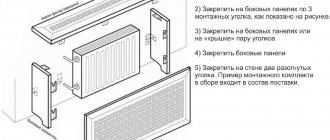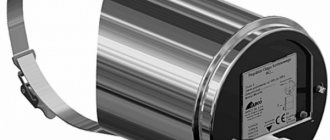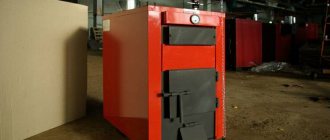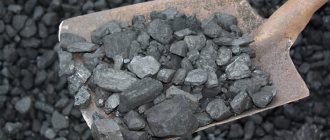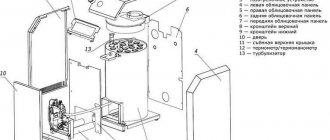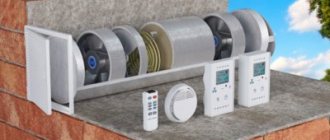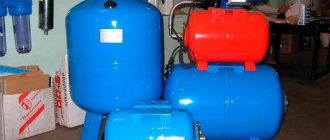Powered by gasoline | 06.12.2016
I’ll start with the unexpected: Microsoft Word saw an error in the word “solArogas” and bravely corrected it to “solArogas”. It would be nice, of course, to warm up with helium, but science hasn’t thought of that yet. Therefore, we will continue with solar gas...
This unit is one of the top products produced by JSC Savo (Penza). Although similar heaters are also produced abroad (for example, in Korea, Japan), the domestic one certainly wins at its price. More on the rest below.
Principle of operation
Strictly speaking, solar gas is a special class of portable liquid fuel heaters that use the combined convection-reflex principle of local air heating. In addition, on the unit you can heat up some liquid food, cook scrambled eggs, and even brew coffee (if someone likes coffee with a slight kerosene aroma). True, this will happen quite slowly. However, the main thing is not to freeze indoors if:
- It was not originally heated (for example, a garage or basement);
- The electricity at the dacha was suddenly cut off;
- It has an area of no more than 15...20 m² (depending on this parameter, “Savo” produces a whole line of solar gases; we note in parentheses that they could have come up with a better name for the heater... Well, as it is, it is).
Heating using the stove in question occurs in the following sequence:
- Fuel (kerosene, although there is unofficial information that in principle solar gas does not object to diesel fuel) is supplied to a special container, where it wets the wick located in the pan under the burner.
- After some time, the evaporation process begins, in which kerosene vapor enters the upper part of the wick bowl.
- When an air-kerosene mixture is ignited, its temperature increases sharply (up to 600...800°C), the mixture flares up, and then begins to burn layer by layer (“layer by layer”, because between the particles of kerosene vapor there is heated air, which, as is known, contains enough nitrogen).
- As the air-kerosene mixture warms up, convection processes are activated, as a result of which open combustion stops, passing into the smoldering phase.
- The waves of thermal radiation released in this case are repeatedly reflected from the surface of the solar gas and accumulated by a reflective grid built into the device. As a result, the temperature in the room gradually increases.
Since the wick is wetted by gravity flow of kerosene, heating will continue until the tank is completely emptied, and the intensity of the fuel supply can be adjusted. Since there are no fuel losses, the efficiency of the heater is quite high: consumption, according to practice, does not exceed 250 ml/h. With a tank capacity of 2 liters, continuous operation of the device will last for 7…8 hours. During this time, either the weather will change or the electricity will finally be turned on. Under no circumstances should solar gas be used as a stationary heat source.
Heater "Solyarogas": advantages and features
Kerosene, summer and winter diesel fuel (diesel fuel) or gas are used as energy carriers. Solar gases are easy to use and do not require installation of a chimney. The complex of excellent characteristics gave the devices a second name - a miracle oven.
Areas of application
Solar gases are most often used for heating rooms. It could be:
- warehouse with cross-ventilation;
- garage;
- workshop;
- basement;
- vegetable store;
- construction site, etc.
Equipment of this type is usually used in emergency situations: the lights are turned off at the dacha or in the workshop, and the electric heaters stop working. Solar gases help create comfortable conditions for temporary stay in unheated rooms with an area of 15-20 square meters. m.
The devices can also be used to reheat or cook food, but the food will take a long time to cook.
Advantages of heaters
- Wide range of models
. The manufacturer offers several models with power from 1.8 to 2.9 kW.
- Economical
. The device operates on several types of fuel and does not require complex modifications or replacement of burners. One refill is enough for 8-10 hours of continuous burning.
- Compactness
. The equipment fits in the trunk of a car. For ease of carrying, the body has a folding handle.
- Convenient form
. A small pot or pan stands stable on the grate while cooking. When using the Solarogas heater, displacement and overturning of the device are excluded.
- Original fuel system design
. The device can be refueled directly during the combustion process. If this option does not suit you, you can remove the tank and add fuel. There is always a small volume of kerosene or diesel fuel in the storage bowl, sufficient to operate the heater for several minutes.
- Strength
. Sheet metal is used to make furnaces. The products are durable and reliable. The internal design is as simple as possible; there is nothing to break in it.
The disadvantage of solar gases is the release of fuel combustion products. The equipment may only be used indoors for a short period of time. To supply oxygen during the heating period, it is recommended to open the window or provide ventilation to the room in another way.
Operating principle of solar gases
Fuel is poured into a special container. The liquid impregnates the wick located under the burner in a metal tray. As fuel evaporates, gaseous fuel accumulates in the upper part of the wick bowl.
When the air-kerosene mixture is set on fire, a flash occurs first, and then an even layer-by-layer combustion begins, turning into smoldering. Thermal energy is repeatedly reflected by the internal surfaces of the device and accumulates in a reflective grid, from where it is released into the room.
The rate of fuel evaporation, and hence the heating temperature, can be adjusted. Losses of kerosene to the external environment are excluded, since the liquid is in a closed housing.
Design features of Solarogaz heaters
The design of all models in the series is the same. They differ from each other only in the volume of the fuel tank.
- Sheet steel housing . The metal is powder coated with a glossy sheen. The coating protects the housing from corrosion. The three walls of the Solar Gas are made solid, and the front panel has a recess for better convection and convenient adjustment.
- Fuel tank . The container consists of two metal boxes. To fill the tank with fuel, a control valve is provided, which simultaneously serves as a dispenser. The container is attached to a special hook on the back of the case.
- Fuel receiver . The element is equipped with a fuel filter, which reduces the formation of soot, smoke, carbon deposits and increases the service life of the device with frequent use.
- Wick bowl . The part is fixed on runners. When filling the tank, it is moved back and then returned to its original position. The wick is placed in the annular gap of the bottom bowl.
- Burner body . The product is in the form of a truncated cone and is designed to create optimal air flow. A flat or hemispherical mesh is installed on the base of a smaller radius - heat escapes through it. An igniter is attached to the side of the body.
- Burner . The element has the shape of a thick hollow ring. Holes are drilled along the diameter of the product. They are designed to supply the fuel-air mixture into the combustion chamber.
- Adjustment screw . A convenient device that regulates the distance between the burner and the bowl. Using a screw, fuel consumption is set.
- Front Panel . The surface has a protective and decorative function. The front panel protects the user from possible burns, closes the igniter and additionally releases thermal energy into the surrounding air.
Solar gas device
Solar gases differ fundamentally from Savo only in their size and the capacity of the fuel tank. Otherwise, the design of the heater is the same:
- The body is made of thin sheet metal , painted with glossy paint (which further increases the intensity of heat distribution). The body includes three solid walls, while the front panel has a deep cylindrical cutout to facilitate convection and to control the heater.
- Fuel tank , welded from two steel boxes and equipped with a control valve. Kerosene is poured through it, and when the tank is installed in its working position, it ensures a stable supply of a dosed amount of fuel. According to the layout, the tank is located on the back side of the device and is hung on a flat hook.
- Fuel receiver with a mesh filter , which is necessary for frequent use of the heater, as it ensures a stable supply of fuel.
- Bottom wick bowl , which also provides a seat for the burner body. The bowl is equipped with runners, extends back when filling solar gas, after which it slides back into the cylindrical cutout on the front of the body. The wick (or even better, two) is placed in the annular gap of the bowl so as not to block access to the kerosene stream.
- The burner body , which has the shape of a truncated cone and is equipped with concentric protrusions along the entire generatrix. They prevent the supply of “excess” air to the burner, otherwise the mixture may not ignite. The smaller base of the cone has a mesh - flat or in the form of a hemisphere - through the holes in which the heat will escape. An igniter is attached to the side of the body.
- Burner , which is designed as a hollow, thick ring with evenly spaced holes through which a mixture of kerosene vapor and air enters the combustion chamber.
- An adjusting screw (located in the upper part of the front panel), which sets the optimal distance between the wick bowl and the burner. Precise tuning of the combustion mode is very important: if the housing is raised excessively, then ignition may not occur at all, and if the housing is lowered beyond the required distance, the mesh will begin to heat up. This not only increases fuel consumption, but also ensures that the mesh burns out quickly. By the way, there are no wearing parts included with the heater (except for wicks).
- Decorative front panel , in order to cover the igniter and eliminate possible accidents when using solar gas, for example, burns, or - even worse - stopping the combustion of the mixture. The panel serves both as a reflector, which additionally releases heat into the atmosphere, and as a stand for the same frying pan or coffee pot.
How to make a wick for a solar gas stove with your own hands
Very often, people try to save money on heating rooms where people are not regularly present. In such a situation, using a solar gas stove would be an excellent choice. It does not stop running on diesel and will do an excellent job of supplying heat to small rooms. Plus, the design of the stove is simple and the device rarely fails. Very often you only have to change the wick for solar gas, which is easy to do with your own hands.
Solar gas models are distinguished only by the size and capacity of the fuel tank. In this case, no fundamental design changes are made to the design of the diesel fuel burner. The body of the unit is made of thin sheet iron and painted with glossy paint. This makes it possible to expand the speed of heat energy propagation. A deep cylinder-shaped cutout was created on the front panel of the case to control the stove and improve the convection process.
The fuel tank is welded from two metal boxes and equipped with a control valve. Fuel is poured through such a structural element, and when the tank is installed in the working position, a stable supply of kerosene in the required quantity is achieved. The fuel container is located on the reverse side of the solar gas.
The fuel receiver with filter is designed to be equipped with a stable supply of flammable liquid. The bottom wick bowl is equipped with metal runners and can be pulled forward while refueling the stove. The wick is located in a specialized ring-shaped gap.
The burner body, created in the form of a truncated cone, has concentric protrusions throughout the entire body. This makes it possible to dose the amount of air entering the combustion area. On the side of the smaller base of the cone there is a mesh through which the heat escapes. The ignition wick is placed on the side of the body. The burner itself is a hollow ring with holes on the surface. They are designed to supply a mixture of kerosene vapor and air into the firebox.
The adjustment screw is located on the front panel in its upper part. For good operation of a diesel stove, setting the combustion mode is very important. If the body is raised too high, the fuel may not ignite, and if it is lowered too low, the mesh will begin to heat up. The final design element is the decorative panel located at the front. It is intended not only for the beautiful appearance of the unit, but also makes it possible to eliminate accidents during operation of the stove .
How to use?
First of all, solar gas is a technique that, despite its apparent unpretentiousness, requires careful maintenance. For example, solar gas that has not been purified after last year's use most likely will not work.
The heater is prepared for startup as follows. First, fill the tank with fuel using a regular funnel. It is impossible to install the tank on a flat surface - welded ribs get in the way - so you will have to look for a suitable groove. The fuel supply clan is screwed into the tank, turned over and hung on the rear inner wall of the solar gas. The manufacturer's instructions require that some free space be left in the upper part of the tank volume, which will take into account the fact of thermal expansion of kerosene when it is heated. In practice, this warning is ignored, since in fact the volume, if at all, increases, then very little.
Next, the wick bowl is pulled out. The wicks are laid in such a way as to completely cover the perimeter of the annular gap. The entire surface of the bowl should be clean, and not even have individual spots of soot - this can prevent kerosene from accessing the small hole in the bowl through which fuel should flow to the burner (the hole, by the way, is hard to see). After this, the wick bowl moves into its original position.
The heater is installed strictly horizontally so that the kerosene can be directed by gravity to the combustion zone. After this, you need to wait a few minutes until the wicks are saturated, and then close the supply and ignite the vapor of the working mixture in the lower part of the burner body with an igniter. Unfortunately, the intensity of the igniter opening must be established experimentally. The manufacturer claims that the ignition time depends only on the characteristics of the fuel, but in practice the initial air temperature in the room, its humidity, etc. also influence. At first, the flame will flare up above the level of the burner grid, but after a few seconds it will become lower, and at this moment fuel must be supplied again. The adjusting screw ensures that the flame does not escape from under the mesh, and that the mesh itself looks like a hot hemisphere. A uniform blue flame should be observed along the entire length of the wick. The process of igniting solar gas, especially for users who do not have experience in operating such equipment, is quite lengthy and can take 30...40 minutes. When ignited, the characteristic smell of kerosene is clearly felt, which then decreases, but still does not completely disappear. This is not a malfunction of the heater, but does not add comfort.

